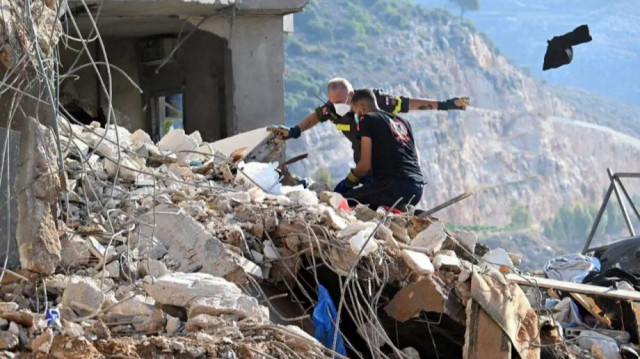
'Out of nearly 400 such coordination attempts, 44% were outright denied,' says spokesperson
The UN on Thursday said Israel denied or obstructed the majority of humanitarian aid missions in the Gaza Strip throughout June, severely undermining relief operations amid worsening conditions for civilians.
"Looking back at the month of June, out of nearly 400 such coordination attempts, 44% were outright denied by Israeli authorities. Another 10% were initially accepted but faced impediments," spokesperson Stephane Dujarric said at a news conference.
"Only a third were fully facilitated," he said, while "about 12% had to be cancelled by the organizers for logistical, operational or security reasons."
Noting that humanitarian operations continue to face daily obstacles, Dujarric said Israel had denied four out of 15 coordinated humanitarian efforts "to relocate medical supplies or remove debris, among other critical operations" on Thursday.
He pointed to the deadly toll on aid workers, reporting that since last Thursday, nine have been killed from five organizations.
"That brings the total number of aid workers killed to 107 so far this year, and 479 since October 2023. Among them are 326 UN staff," he said.
On Israel's continued evacuation orders, Dujarric warned that "the space left for civilians to stay in is shrinking by the day."
Israel issued another displacement order Wednesday for parts of Gaza.
"Partners estimate that about 40,000 people were in these areas, which included one displacement site, one medical point, and a neighborhood that had been spared from any displacement orders since before the ceasefire. As of earlier today, about 900 families are estimated to have fled," Dujarric said.
Citing the Office for the Coordination of Humanitarian Affairs (OCHA), he noted that more than 50 displacement orders have been issued since mid-March, now covering 78% of the enclave.
"Add the Israeli-militarized zones, and that percentage jumps to 85, leaving just 15% where civilians can actually stay," said Dujarric.
He described remaining areas as "overcrowded and severely lacking in services or proper infrastructure," comparing the conditions to the “over 2 million people stuck in Manhattan, which is actually slightly bigger than Gaza, but instead of buildings, the area strewn with the rubble of demolished and burnt out structures without any infrastructure or basic support."
"And in Gaza, these remaining areas are also fragmented and unsafe," he said.







